Previous research projects at NBI
See the previous research projects below:
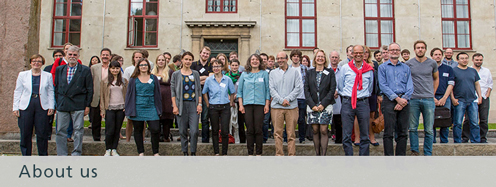
The Danish National Research Foundation Center for Stem Cell Decision Making (StemPhys) commenced in April 2015.
StemPhys has been a unique and interdisciplinary initiative joining forces of physics and stem cell biology with the goal of significantly advancing our knowledge of stem cell commitment and controlling the differentiation process. Three of the core scientists were stem cell biologists from DanStem, Faculty of Health, and three were physicists, two theoretical and one experimental, from the Niels Bohr Institute, Faculty of Science.
Core PI contributions:
Lene Oddershede (Optical Tweezer Group, Biophysics, NBI):
- Cortical tension
- Biomechanical signaling
- Viscosity/Viscoelasticity/Elasticity
- Advanced imaging techniques:
- Super resolution microscopy
- Optical tweezers
- Light sheet microscopy
Joshua Brickman (Brickman group, Danstem, Panum):
- Cell-cell communication (FGF)
- Diffusing cytokine
- Gastrulation
- Single-cell RNAsequencing
Mogens Høgh Jensen (BioComplexity, Biophysics, NBI)
- Cell dynamics
- External oscillating cytokines coupling to protein oscillations
- Arnold tongues and Mode-hopping
- Chaos and gene regulation
-
YAP protein and cell mechanics
Elke Ober (Ober group, Danstem, Panum)
- Liver
- What guides organ shape and size
- How are organs placed relative to each other
- Cell Proliferation
- Tubular network
- Cell-cell communication (Ephrin signaling)
Ala Trusina (Uni-Bio Lab, Biophysics, NBI):
- Lineage Tracking
- smRNA FISH
- Frequency detection
- Rule-based models
- Stochastic models
- How do cells maintain right proportions
Anne Grapin-Botton (Grapin-Botton Group, Danstem, Panum):
- In vitro organoids
- Pancreas
- Cellular polarities
- Tubular network
- What guides organ shape and size
- Cell Proliferation
- Cell-cell communication (Notch-delta)
****
See the below movie introducing some of the work done within StemPhys.

The Discovery center was a "Centre of Excellence" established by the Danish National Research Foundation (DNRF) 2010-2019 (grant expired 31.12.2019)
The center began January 1st, 2010 at the Niels Bohr Institute, University of Copenhagen. Discovery is initially funded by the DNRF for an initial duration of five years.
The center was granted a second 5-year period starting January 1, 2015 and the research areas now includes the Astroparticle Physics group with access to The IceCube Neutrino Observatory - the world's largest and most sensitive ‘telescope' for high energy neutrinos.
Four strong groups join forces:
The activities in the center are focused on the discoveries arising from four closely collaborating groups that are each intensely involved in experiments and the theory of particle physics and cosmology. Central in the joint work is the remarkable new connection between physics at the smallest of scales (as explored at the Large Hadron Collider at CERN) and cosmology at the largest scales measurable in the Universe (as explored by the center's participation in the Planck satellite project). For details on the organization of the center and the people involved, please see the organization page. The participating physics groups of the center are:
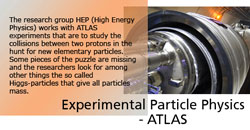 • Experimental Particle Physics
• Experimental Particle Physics
This group participates in the ATLAS experiment at the Large Hadron Collider. On the hardware side the group is involved in the Transition Radiation Tracker as well as in the Trigger-DAQ and on the physics side on final states containing tau-leptons or electrons.
 • Experimental Heavy Ion Physics
• Experimental Heavy Ion Physics
This group participates in the ALICE experiment at the Large Hadron Collider where it is responsible for a laser calibration system for the Time Projection Chamber and for the Forward Multiplicity Detector.
• The Planck Project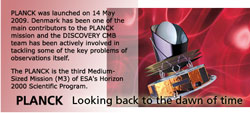 The cosmology group participates in the Planck satellite mission science team, and Denmark has been one of the main contributors to the PLANCK mission and the DISCOVERY CMB team.
The cosmology group participates in the Planck satellite mission science team, and Denmark has been one of the main contributors to the PLANCK mission and the DISCOVERY CMB team.
• Theoretical Particle Physics and Cosmology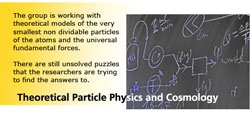 The theory group explores new techniques for calculating amplitudes and probability densities for complex processes involving the strong interaction.
The theory group explores new techniques for calculating amplitudes and probability densities for complex processes involving the strong interaction.
About the RECAP project
The Renland ice cap is situated in Eastern Greenland on a high elevation plateau on the Renland peninsula in the Scoresbysund fjord (figure 1).
Climatic conditions on the Renland ice cap are strongly influenced by the varying Arctic sea ice export along Greenland’s east coast. An ice core from the Renland ice cap is thus perfectly suited for obtaining information on Eastern Greenland climatic conditions including the export of sea ice from the Arctic Ocean for the past 100,000 years. We therefore propose the REnland ice CAP project (RECAP).
The RECAP ice core drilled to bedrock will be the backbone of a coordinated science program between Denmark, Germany and the U.S. The shallowness of the Renland ice cap furthermore assures that it does not have a brittle ice zone in the Holocene ice like the Greenland ice sheet. The RECAP ice core can therefore yield the first continuous Holocene profiles of gasses and chemical impurities extracted from Greenland.
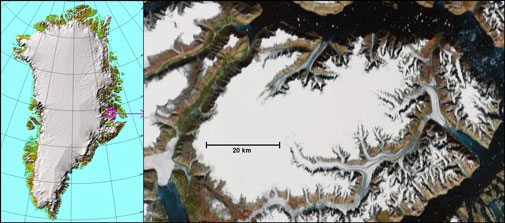
Figure 1: Left, map of Greenland, showing the location of the Renland Ice Cap (Danish Cadastre). Right, satellite image of the Renland peninsula, which is almost entirely covered by the Renland ice cap. The dome on the eastern plateau of the Renland ice cap is marked with a purple square.
The Renland ice cap is constrained by the surrounding topography and its eastern plateau reaches an elevation of 2340m at its summit, where the thickness of the ice cap is almost 400m and the accumulation rate approximately 0.5m of ice equivalent precipitation per year . Brittle ice, that is very detrimental to ice core quality, forms at depths below 600m, hence in contrast to the main Greenland ice sheet, the Renland ice cap contains no brittle ice zone. An ice core from Renland will therefore also yield the first continuous Holocene profiles of gasses and chemical impurities from Greenland.
Given the unique location and properties of the Renland ice cap, the RECAP core will provide data with direct bearing on the following high-priority science questions:
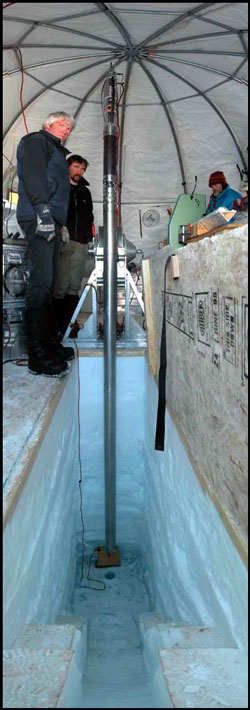
Figure 2: The Hans Tausen intermediate drill system in operation during the 2006 Flade Isblink ice core project.
1) How did the East Greenland and thus Arctic sea-ice conditions evolve during the Holocene and the Glacial and how did conditions and variability compare to the present downturn in sea ice?
2) How did the atmospheric composition, including pole-to-pole gradients in trace gas contents, change during the entire Holocene?
3) What is the East Greenland signature of the abrupt climate shifts seen during the last Glacial?
4) Has the Renland ice cap always had the same shape and size, so the climate record from a Renland ice core can be assumed to stem from snow deposition on a site with unchanged elevation, yielding a Greenland climate record at fixed elevation?
These science questions are directly influencing how the scientific community will interpret the present decline in Arctic sea-ice; our future understanding of the dynamics of the climate system; our interpretation of Human and natural influences on the Earths atmospheric composition; and our future interpretation of the ice cores from the main Greenland ice sheet. To address these, as well as numerous other science questions, we propose to drill the RECAP core through the Renland ice cap down to bedrock. The core will be drilled with the modern well-proven Copenhagen intermediate drill system, capable of drilling high quality 4 inch diameter cores in liquid-filled boreholes (figure 2).
[1] Johnsen et al. 1992, A”deep” ice core from Eastern Greenland, Medd. Grøn., Geoscience, 29, 1992.
